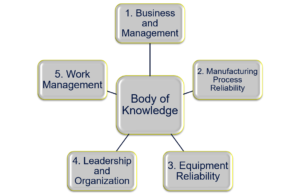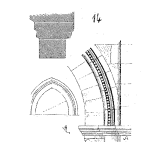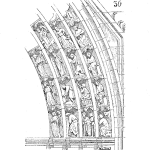
This has been one of the most disruptive week ins recent memory [late January 2020] – at the individual, country, and global levels. I’ll go through a couple of these events. [Read more…]
Your Reliability Engineering Professional Development Site
Find all articles across all article series listed in reverse chronological order.
by Greg Hutchins Leave a Comment

This has been one of the most disruptive week ins recent memory [late January 2020] – at the individual, country, and global levels. I’ll go through a couple of these events. [Read more…]
by Gina Tabasso Leave a Comment

by Alan Ross
So this this a heck of a way to start a blog on reliability, with a picture and video link to what a catastrophic failure of a transformer looks like. If you’ve been in this industry for any length of time you have probably seen it. It is a mess. [Read more…]
by Perry Parendo Leave a Comment

When approaching design validation, what can make us increase our success rate? This video hits highlights of how we approach validation. [Read more…]
by James Kovacevic Leave a Comment
 If you have been in maintenance or reliability for a period time, there is little doubt that you haven’t heard about the SMRP Body of Knowledge yet. The SMRP body of knowledge is more than just a document that outline of topics related to maintenance & reliability. It is a framework in which the CMRP exam is based on and can be used as a framework to improve your facility’s performance.
If you have been in maintenance or reliability for a period time, there is little doubt that you haven’t heard about the SMRP Body of Knowledge yet. The SMRP body of knowledge is more than just a document that outline of topics related to maintenance & reliability. It is a framework in which the CMRP exam is based on and can be used as a framework to improve your facility’s performance.
by Greg Hutchins Leave a Comment

As we get older, it’s interesting what we recall from our youth and the impact it had upon us – even if we didn’t know it at the time. For me, I was blessed with having several teachers who supported me and influenced me a great deal. [Read more…]

If you’ve worked around the fields of reliability or quality for any length of time, you’ve certainly encountered and have likely assembled the humble yet mighty histogram. This specialized bar graph is one of the most common starting points for analyzing continuous data. It not only portrays the frequency of numerical data across its range of values, but also provides hints at the data’s underlying probability distribution. [Read more…]
by James Reyes-Picknell Leave a Comment

Surprises happen anywhere and to anyone. In your operation, you can expect that regardless of your best efforts, some work will arise that must be done right away. Most would call these emergencies.
To me, an emergency is something that is or is about to have a MAJOR impact on: Safety (i.e.: injury or death), Environment (i.e.: a major incident that is likely to get you fined or shut down), or Production/service delivery (i.e.: irreparable impact on the bottom line in the financial reporting period). [Read more…]
by Robert Kalwarowsky Leave a Comment

by Perry Parendo Leave a Comment

While the push for remote working or work from home is efficient, there are some downsides that people need to be aware of. This video discusses certain advantages for in person situations. [Read more…]
by James Reyes-Picknell Leave a Comment

A lot of people think about this one, but their actions reveal that this myth underlies what they are thinking.
Shutdowns are major undertakings performed when production is at a standstill (zero revenues) and because of the scale of the work being undertaken, costs are at a high point. There is a natural and well-justified desire to minimize the duration and frequency of shutdowns. [Read more…]
by Robert Kalwarowsky Leave a Comment

That popped out of me on Friday when talking to Susan Hobson. It came from a place of passion, purpose, meaning and self-worth. All of that has changed for me and we’re going to be bringing it to you. [Read more…]
by Bryan Christiansen Leave a Comment

Your facility asset and equipment are first and foremost a significant organizational investment. Performing routine maintenance on them is a key aspect of maintaining them in functioning order. Nothing will risk derailing production like an unexpected catastrophic failure of critical equipment – and one of the best ways to prevent that is to develop a robust routine maintenance strategy for your assets.
by Carl S. Carlson Leave a Comment

In last month’s article we discussed the most common FMEA mistakes and how to convert them into quality objectives. This month we will focus on how to audit FMEAs, using the FMEA quality objectives as a guideline.
“Twice and thrice over, as they say, good is it to repeat and review what is good.” Plato
by Robert Kalwarowsky Leave a Comment

Yes.
It doesn’t matter if you’re an executive at your company, if you’re a coach of a sports team or if you have an important role at your church. We are all leaders. [Read more…]
by Robert Kalwarowsky Leave a Comment

I’ve had a lot of responses from last week’s podcast about Fear-Based Leadership, specifically around the use of metrics. Metrics drive behavior and we, as leaders, need to be careful about what we’re measuring and how our people perceive our use of those metrics.
What do I mean? [Read more…]